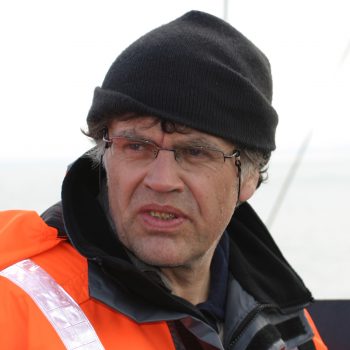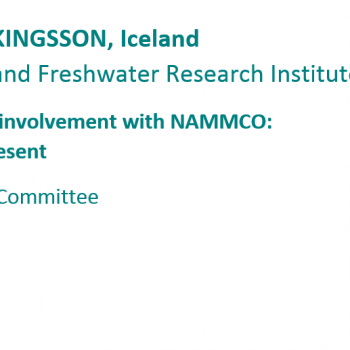November 9, 2018: Behind NAMMCO – Gísli Víkingsson
Having been involved in NAMMCO since its foundation in 1992, Gísli Víkingsson has served as Chairman of the Scientific Committee, and has been a key contributor to NAMMCO’s Scientific Publication Series:


History of Involvement in NAMMCO:
I have been involved with NAMMCO since it’s foundation more than 25 years ago. I have attended all annual meetings of the Scientific Committee and served as a Chairman of the Committee as well as convening and chairing Working Groups and co-editing NAMMCO Scientific Publications. My involvement with research on marine mammals started in 1986 when I started working at the Marine Research Institute in Reykjavík, newly graduated as a behavioural ecologist from the University of Copenhagen with speciality in something completely different, greylag goose sexual behaviour. At this time, I was sceptical about the scientific foundations of the ongoing whaling operations in Iceland and elsewhere and working at the MRI enabled me to do something about that. This was particularly appealing as the MRI was about to start an ambitious whale research programme under the leadership of Jóhann Sigurjónsson which included the first NASS surveys in 1987 and 1989. This programme was a turning point in research and management of cetaceans in Iceland and with the subsequent establishment of NAMMCO in 1992, the management of cetaceans in Iceland has been based on solid science. Although small (compared e.g. to the IWC), the Scientific Committee of NAMMCO has been effective in its deliberations to provide scientific advice to the authorities of the member states during the last 25 years. The working methods of the Committee, based on intersessional working groups where the best additional expertise is sought from outside the SC on a case by case basis, have proven to be an effective way of providing the requested advice. It is difficult to single out the most significant achievements of NAMMCO so far, but the turnaround in management of narwhal and beluga in Greenland and the management advice for fin and common minke whales in Iceland come to mind. At present the most challenging issues facing NAMMCO include monitoring and evaluation of the impacts of various anthropogenic factors other than direct takes such as climate change, bycatch and various kinds of pollution. As a responsible user, NAMMCO should be in the forefront in conserving these natural resources. In order to fulfill that role, financial strengthening of the organisation, particularly the SC is needed.


